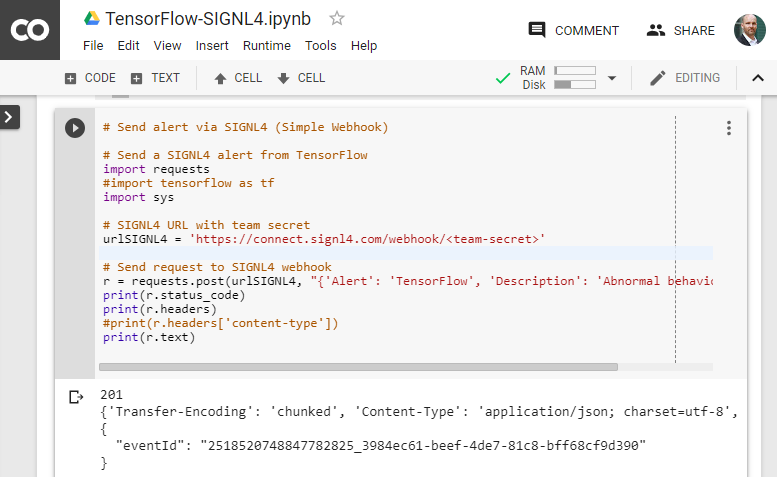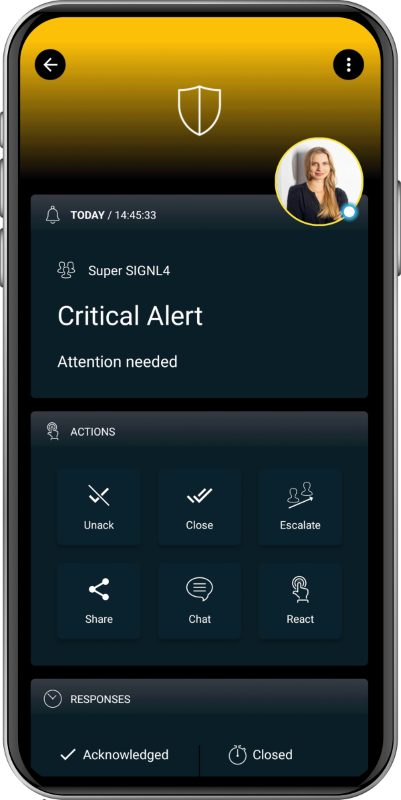SIGNL4 Integration with TensorFlow
TensorFlow is an open-source software library for for high performance numerical computation. It can be used from desktops to clusters of servers to mobile and edge devices such as Raspberry Pi. TensorFlow was originally developed by Google AI researchers and comes with strong support for machine learning and deep learning and the flexible numerical computation. Pairing TensorFlow with SIGNL4 can enhance your daily operations with an extension to your mobile team.
There are various use cases possible with TensorFlow:
- Video, image and sound recognition
- Big data analysis (e.g. financial data)
- Pre-processing of sensor data in the field
- Deep learning, risk detection, predictive maintenance, fraud detection
TensorFlow can be used in quite a range of different scenarios. The following integration demonstrates demonstrates the part of sending certain information to a SIGNL4 team via an HTTP POST request.
SIGNL4 is a mobile alert notification app for powerful alerting, alert management and mobile assignment of work items. Get the app at https://www.signl4.com.
Prerequisites
- A SIGNL4 account
- Access to TensorFlow
How it works
You can install TensorFlow for example with Python’s pip package manager or you can download a TensorFlow Docker image. Find out more here.
In our example we use TensorFlow on Colaboratory, a research tool for machine learning education and research. It is free to use and requires no setup.
In Colaboratory at you can add a new Python 3 notebook (File -> New Python 3 notebook) here.
There you can paste your Python code for sending the alert to SIGNL4.
We have prepared two Python examples you can just download from GitHub here.
Simple SIGNL4 Webhook
The file TensorFlow-SIGNL4-Inbound-Webhook.py contains a simple script to send alert data in JSON format to SIGNL4 via webhook (HTTP POST).
Please note that you need to replace the in the SIGNL4 URL with your own SIGNL4 team secret.

REST API
Besides the simple inbound webhook SIGNL4 offers a more comprehensive REST API as well.
The file TensorFlow-SIGNL4-REST-API.py used this REST API to send an alert including a diagram as base64-encoded image.
Please note that you need your SIGNL4 API Key to use the REST API. for more information on how to obtain your API Key please refer to this article.
Now you can test it by executing the code in Colaboratory. Just click the little Run icon on the top-left of your code. You should then receive an alert on your SIGNL4 app.
The alert in SIGNL4 might look like this.

